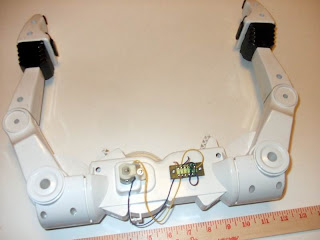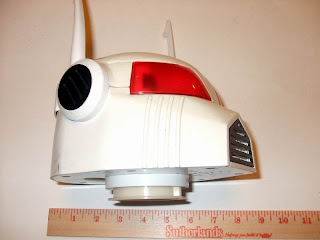The receiver can drive most toy motors of an average of about 2 AMPS. If the motor overloads the receiver board will cut the motor power and make a buzzing noise out the speaker. The joysticks control 2 motors forward and reverse and buttons control forward and reverse on 2 other motors. A 5th motor is controlled on and off by a single push button on the remote. The system has a range of about 75 meters and can be increased by making a longer remote antenna, up to the length of the wire antenna on the circuit board. Because it has a consumer grade robust receiver you can just wire up your robots or vehicles motors and add 6 volts and test the system right away. If the speaker buzzes a lot when you operate the motors then they are pulling too much current and are not suitable. This is as long are you supplying a full 6.5 volt battery pack and are using wires no smaller than the wires on the receiver board. A RC car or truck that has lost its remote is easy made to function with this system. Use joystick controlled wires to connect to the vehicle motor and the other joystick for the steering motor. In most cases you can just tap into whatever battery was used in the vehicle to power the circuit. Here is the standard wiring diagram for the reciever circuit.
The right and left track wires would be considered the main drive motor wires only because they are controlled by the joysticks. In fact all the circuit outputs are the same components so the power output would be the same for all the motors. The fire button runs a motor as well but is controlled by a single button (Red labeled FIRE) so it is only on and off. The direction depends on how it is wired. The only downside to this whole system is a 5 second self test that the circuit does when first turned it. It opens the arm motor then reverses it (closes arm) then it tests the waist motor as well. It also announces this over the speaker saying "checking system waist down the speaker can be switched off. But there is not way out of it doing the self test when you first turn it on.
Otherwise it makes a great RC system ready to operate motors.



























